7 common Rotala species that you can choose for the background
Rotala species are usually used in the backgrounds of planted tanks. They are fairly easy to plant and care for, making them very popular in the hobby. This article includes some common and attractive Rotala species that you can choose for your planted tank.
- Rotala rotundifolia
- Rotala rotundifolia 'Green'
- Rotala rotundifolia 'Red'
- Rotala macrandra – Giant Red Rotala
- Rotala macrandra 'Green' – Giant Green Rotala
- Rotala wallichii
- Rotala spec. 'Nanjenshan'
Rotala rotundifolia
- Difficulty: easy
- Growth: medium
- Height: 6 – 12+ inches (15 – 30+ cm)
- Lighting: low
- CO2: low
Rotala rotundifolia is considered one of the most popular plants used for aquascaping. Its name literally means “plant with round leaves”. However, the marsh variant is the only one with round leaves.
This plant is also known by the name Rotala indica due to mislabeling and confusion back in the 1960s. It usually grows 15 to 30 stems that are around 2 to 3 centimeters wide and grow long, narrow leaves.
Growing this plant is not as demanding compared to the other Rotala species. All it needs is sufficient light. Since it is a stem plant, it will continually grow to the top, usually following the light. If not pruned, it will grow leaves and flowers on top of the tank.
They can also grow downwards in the tank and lie on the substrate. Always make sure to prune them regularly because it can eat up the aquarium’s space. It also tends to form side shoots, making the lower leaves unable to have enough light.
Rotala rotundifolia ‘Green’
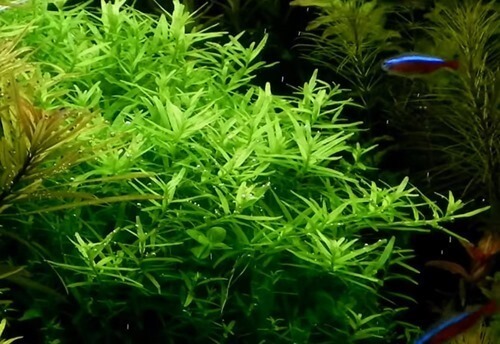
- Difficulty: medium
- Growth: fast
- Height: 8 – 12+ inches (20 – 30+ cm)
- Lighting: medium
- CO2: medium
Rotala rotundifolia ‘Green’ has leaves that stay fresh and evergreen all throughout, even if it is exposed to intense light. Its stems can also grow up to 50 cm long with long narrow leaves that are up to 3 centimeters wide.
This green plant is very versatile. It can grow well under low light conditions and it can survive intense light conditions as well. It can achieve an upright growth with bushy leaves if planted on the aquarium corner.
It tends to grow sideways first before going upwards the tank. They are great plants when you are just starting out because they’re easy to care for and easy to manage as well. You can also opt to plant them in large groups so they can look at their best.
Despite being low-maintenance, this plant requires pruning on a regular basis. If left unintended, its dense leaves can take over the aquarium.
Rotala rotundifolia ‘Red’
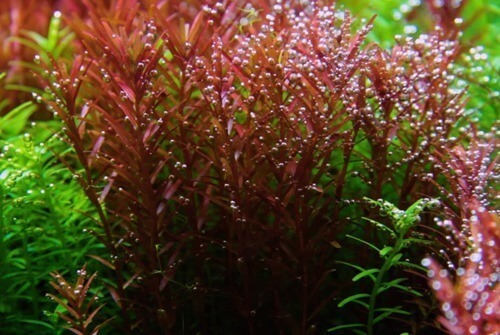
- Difficulty: average
- Growth: medium
- Height: 4 – 8+ inches (10 – 20 cm)
- Lighting: high
- CO2: high
Rotala rotundifolia’ Red’ is a bushy plant that can turn orange-red to red from the popular species. It looks best when planted in the background with the Rotala rotundifolia ‘Green’ to bring contrast to your aquarium.
To bring out its distinct color, you would need to apply iron-rich additives to achieve that intense red color. Like the other species, this plant is low-maintenance and can grow fast. You will need to make sure that it is regularly pruned. Otherwise, it will become too dense.
When planting the Rotala rotundifolia’ Red’, separate the stems individually. Plant them within an inch or half an inch apart, so they’ll have plenty of space to grow.
Rotala macrandra – Giant Red Rotala
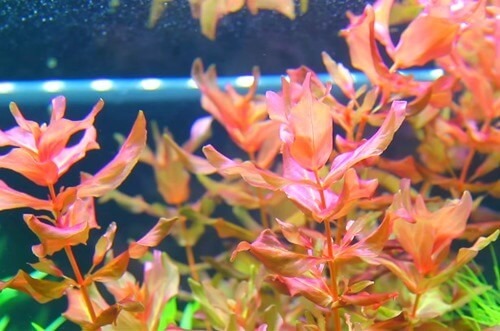
- Difficulty: advanced
- Growth: medium
- Height: 8 – 12+ inches (20 – 30+ cm)
- Lighting: high
- CO2: high
Being a stem plant that represents red aquatic plants, Rotala macrandra forms a very attractive clump. The red leaves make it stand out in your aquarium. The attractive clumps, however, can be easily damaged if not taken care of properly.
This plant can decay fast if it doesn’t get its needed nutrients. It’s also very demanding since it needs not only the right nutrients but also the right environment in order to grow. The high levels of the conditions this plant needs in order to thrive can make it tough, especially for people who have no experience in growing aquatic plants.
Ideal conditions are soft to moderately hard water, CO2 injection, plenty of iron, and lots of light. Shading can be a big problem and care should be taken not to place the plants too close together. Good circulation and water temperature of 75°F to 82°F as being very important also. Provide the right conditions for R. macrandra and you’ll not be disappointed.
Rotala macrandra ‘Green’ – Giant Green Rotala
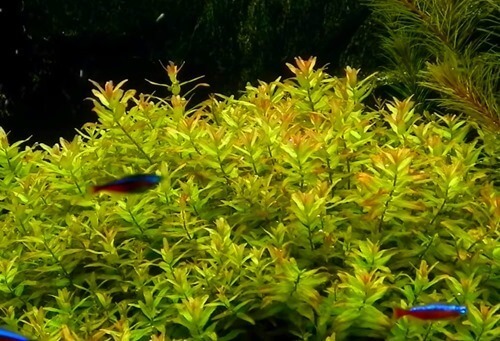
- Difficulty: advanced
- Growth: medium
- Height: 8 – 12+ inches (20 – 30+ cm)
- Lighting: high
- CO2: high
The Giant Green Rotala looks similar to the Giant Red Rotala. Their only difference, as indicated in their name, is the color. However, while the Giant Red Rotala can be very demanding and takes more effort to grow, the Giant Green Rotala is easier and sturdier.
Although it is usually green, the right conditions can have its leaves turn light pink. Don’t worry, though, if it becomes this color. It doesn’t mean the plant isn’t getting what it needs.
The appearance of the Giant Green Rotala and the Giant Red Rotala may be similar in most aspects. However, in terms of size, the Giant Green Rotala tends to grow smaller leaves at a slower pace.
It’s a good starter plant that looks best when it’s planted in large groups. This plant has side shoots that grow opposite leaves. Like with the other species, make sure it is regularly pruned.
Rotala wallichii
- Difficulty: advanced
- Growth: medium
- Height: 4 – 12+ inches (10 – 30+ cm)
- Lighting: high
- CO2: high
Another popular plant is the Rotala wallichii. Compared to other aquarium plant species, it has the narrowest leaf. It also looks more delicate compared to the others. While it may give your aquarium that ‘soft’ effect, this plant is very demanding and can be hard to grow.
Rotala wallichii requires a lot of light, nutrients, additional CO2, and constant fertilization. The nitrate levels should never fall to zero but should not also exceed 15 mg per liter. It also requires a good supply of iron, phosphates, and other nutrients.
The plants that are the closest to the surface are the ones with the most intense colors. These are also the ones with the most number of shoots. Like with other Rotala species, it also needs pruning to ensure it won’t invade the whole aquarium.
Rotala spec. ‘Nanjenshan’
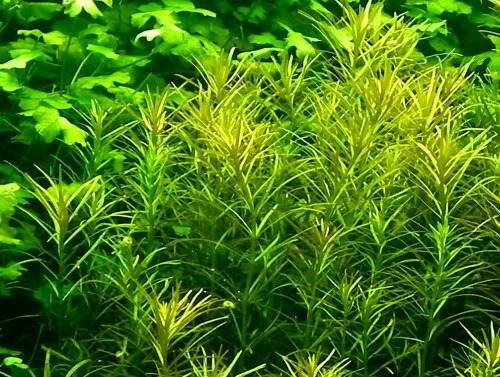
- Difficulty: advanced
- Growth: medium
- Height: 4 – 12+ inches (10 – 30+ cm)
- Lighting: high
- CO2: medium
Rotala spec. ‘Nanjenshan’ is a hybrid Rotala. It’s a cross between Rotala Wallichii and Rotala Rotundifolia. The leaf colors will depend on the conditions of the aquarium. Usually, the plant turns green instead of orange if it doesn’t have enough light.
This plant is the toughest Rotala and can grow even with low CO2 levels. However, it still requires a lot of light, and it thrives in water that is softer and more acidic. Make sure that the parameters in your aquarium are stable. If drastic changes are made, the leaves can easily rot.
It’s a demanding plant that needs constant maintenance in order for it to grow well. It requires a lot of trimming. One of the best things about Rotala spec. Nanjenshan is that the more it is trimmed, the denser and more attractive it becomes. If you want the plant to have a better yield, CO2 injections and good soil quality can help.

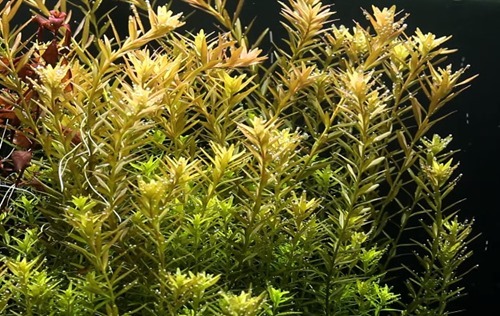 Rotala rotundifolia #ad
Rotala rotundifolia #ad Rotala wallichii #ad
Rotala wallichii #ad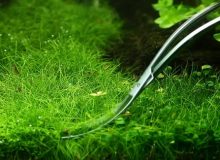
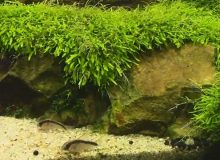
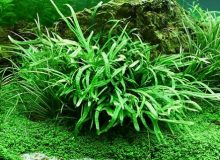
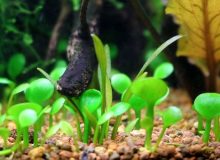
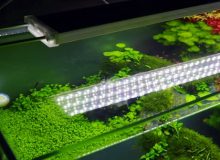
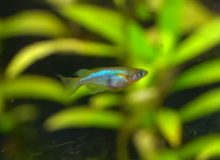
When I see pictures of rotala rotundifolia on the Internet, I always see photos like these. However, the ones I have are showing much more rounded leaves; do they need time to grow/mature?
Thanks,
Eric
Hi Eric,
R. rotundifolia is capable of producing different leaf shapes, sizes and colors depending on environmental factors such as light, nutrients, temperature etc. Round leaves means the plant has been grown emersed and you will see new narrow leaves soon after submersed.